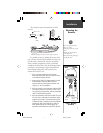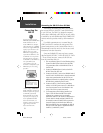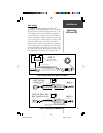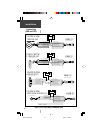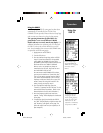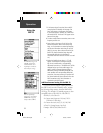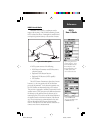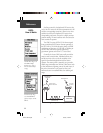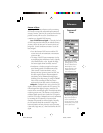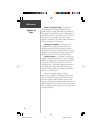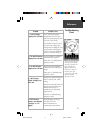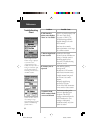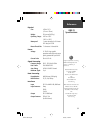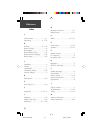
16
Reference
Sources of
Error
Number of Satellites Visible— As previously
stated, the number of satellites available can affect
position accuracy. To apply the corrections provided for
the satellites received at the beacon transmitter station, the
same satellites (at least in part) must be received by your
GPS receiver. And, certainly, if there aren’t enough
satellites to determine a GPS position, there aren’t enough
satellites to calculate a DGPS position.
Atmospheric Conditions— Differences in the
ionosphere and/or troposphere between the DGPS
broadcast station and the DGPS receiver can result in
decreased position accuracy. Although this does not cause
significant error, the amount of error can increase as you
get further away from the DGPS broadcast station.
Satellite Geometry— A minimum of 4 satellites are
required to determine a 3D position. At times, additional
satellites are required due to their placement with respect
to each other. This relative placement is referred to as
“satellite geometry”. Ideal satellite geometry exists when
the satellites are located at wide angles with respect to
each other. When satellites are located in a line, satellite
geometry is considered poor.
This same requirement applies to DGPS. If
corrections are available for four different satellites, but
they are all located in the same general area or in a line,
the DGPS corrections will be minimal. However, if the
same four satellites are placed farther apart, in several very
different directions from our position, the corrections will
have a much greater effect and the position accuracy will
be greatly improved.
GBR 23 Manual.p65 5/23/00, 1:28 PM16



